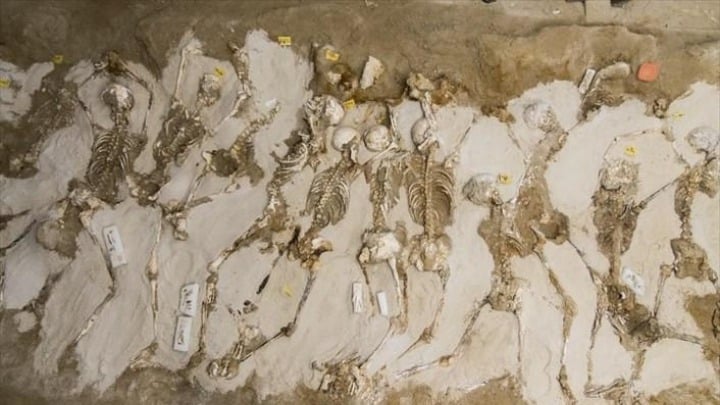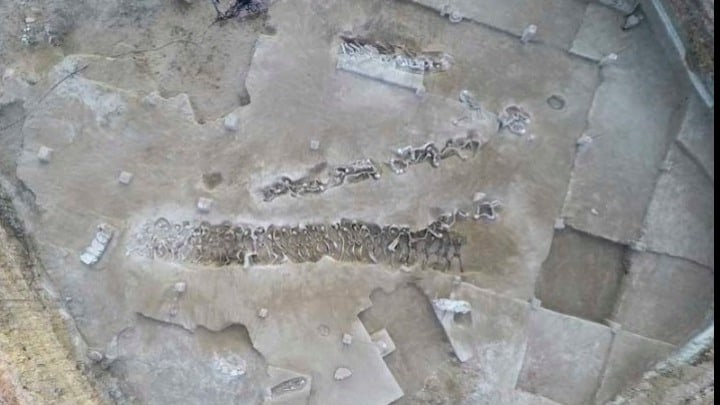Beneath the modern vibrancy of Athens, a chilling testament to the past lies hidden. In 2016, during excavations for the Stavros Niarchos Foundation Cultural Center, archaeologists unearthed a scene straight from history's dark pages: 78 skeletons, bound and executed en masse. Known as the "Desmotes Falirou," these silent figures whisper tales of a 7th-century BC tragedy.


Their final resting place, Faliro Bay, witnessed their fate unfold. Three distinct clusters marked the execution site, each revealing a story. Some lay bound by invisible fetters, their contorted postures hinting at restraint. Others bore the brutal imprint of iron shackles on their wrists, a stark reminder of their captivity. A third group showed telltale signs of hands tied behind their backs, a chilling echo of their final moments.
For over six years, a painstaking process of preservation unfolded. From 2016 to 2022, experts battled environmental foes like humidity and salt crystals to safeguard these fragile remnants. Now, a new chapter awaits.
A groundbreaking project is underway to ensure public access to this poignant piece of history. A 6.5 million euro protective shell, funded by the Recovery Fund, will soon rise above the remains. This museum-grade structure, carefully designed to blend with the Stavros Niarchos Foundation Esplanade, will offer visitors a chance to witness and contemplate the Desmotes Falirou.
More than a mere shelter, the shell's design holds a deeper purpose. A sparse underground space will cradle the shackled skeletons, allowing visitors to peer into their past to understand the brutal reality they faced. The entire structure will be universally accessible, ensuring everyone can engage with this powerful testament to a long-forgotten chapter of Athenian history.

